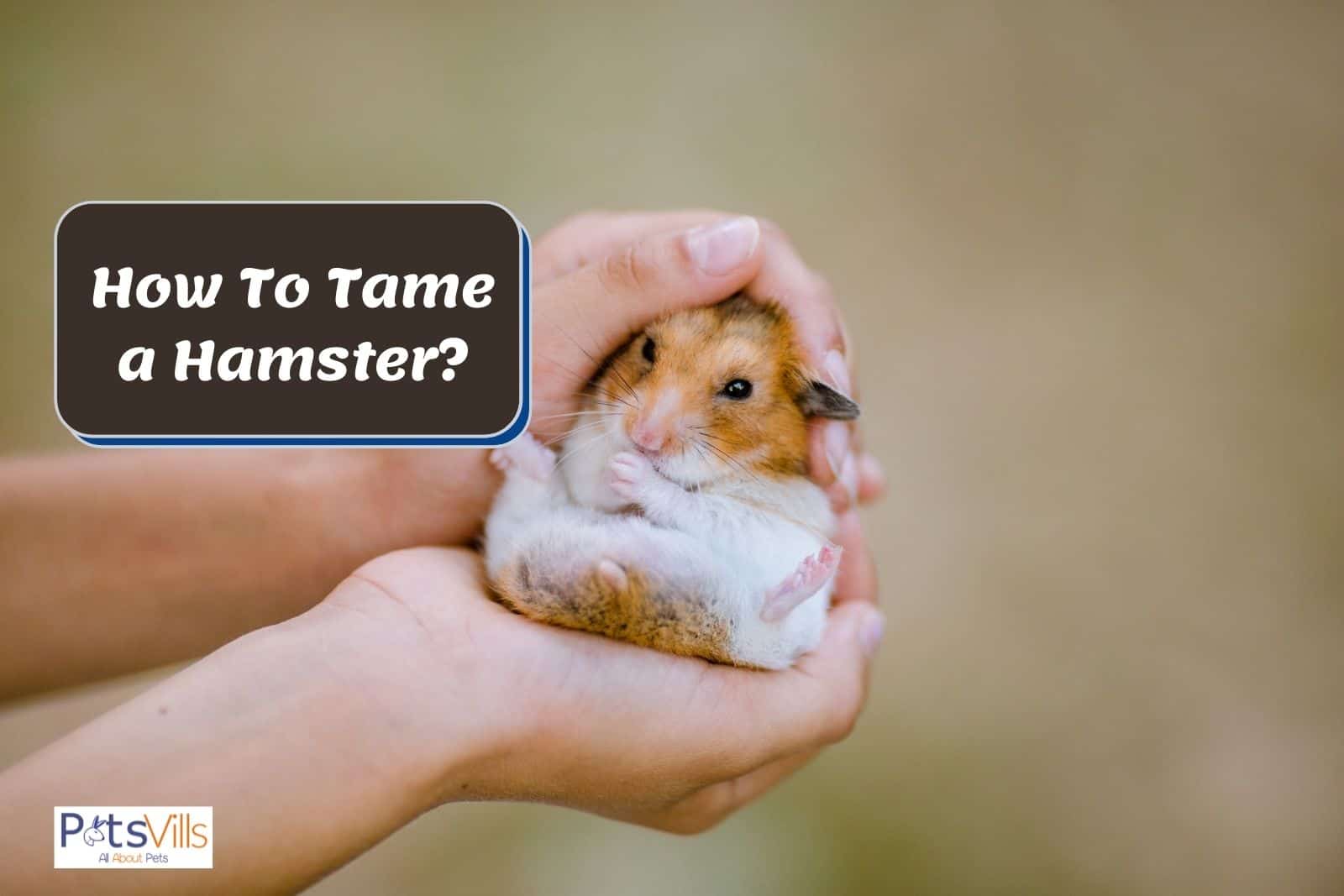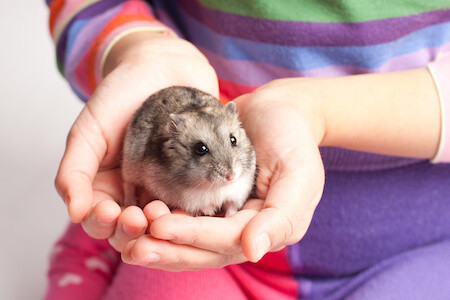Pet hamsters are adorable little creatures that make great pets for individuals of all ages. They are cute, fluffy and highly intelligent, making them the perfect companions for those who lead busy and stressful lives. However, taming these tiny animals can sometimes prove to be a challenge, especially if you’re easily prone to overstimulation. In this blog post, we’ll be sharing some tips on how to manage overstimulation during pet hamster taming sessions so that you can enjoy spending quality time with your furry friend without overwhelming them. If you’ve been struggling with taming your pet hamster or if you’re just getting started with pet ownership, keep reading!

1. Start with short interactions to avoid overstimulating your hamster during taming sessions.
Many people make the mistake of overstimulating their pet hamster during taming sessions, which can lead to stress and anxiety for the animal. To avoid this, it’s crucial to start with short interactions that gradually increase in duration over time. By doing this, you’ll allow your hamster to slowly acclimate to your presence and become comfortable with you handling them. Additionally, it’s essential to approach the cage calmly and avoid any sudden movements that could startle your hamster. Remember to set realistic expectations for your hamster’s progress in taming, as all hamsters are different and may require more or less time to become fully comfortable with their owners. Above all, remember to be patient and loving throughout the process, as building trust with your hamster is the key to successful taming.
:strip_icc()/how-to-handle-and-tame-pet-hamsters-1238956-06-51d567df0d3a44c088a0971c97957bdc.jpg)
2. Approach the cage calmly and in a non-threatening manner.
Approaching a pet hamster’s cage calmly and in a non-threatening manner is crucial in the taming process. To avoid scaring your hamster, speak softly in a soothing tone and avoid making any sudden movements. When opening the cage, do so slowly and gently, and allow your hamster to approach you on their own terms. Remember that a hamster’s cage is their territory, so it’s important to be respectful of their space. By approaching the cage calmly, you’re showing your hamster that you’re a friendly presence and someone they can trust. This can go a long way in building a positive relationship with your pet hamster.

3. Set realistic expectations for your hamster’s progress in taming.
Setting realistic expectations for a pet hamster’s progress in taming is crucial. It’s essential to remember that taming a hamster requires time and patience, and each hamster may have its own unique personality and level of comfort with humans. It’s essential to manage expectations and not rush through the steps. Building trust with your hamster is a gradual process that can take weeks, if not months. Some hamsters may take longer to tame, and it’s crucial to remember that while progress may be slow, it’s essential to be patient and persistent. With time, love, and care, even the most challenging hamster can become a beloved companion. Remember, all hamsters deserve our love and care, no matter how long it takes to tame them.

4. Take the time to build trust with your hamster.
Building trust with your hamster is a crucial part of taming them. Taking the time to establish a bond with your furry friend is essential. When your hamster sees that you are trustworthy and kind, they will be more likely to feel comfortable around you. Offer treats while they are still in their cage, then slowly move on to hand-feeding. Remember to be patient, as each hamster has their own pace when it comes to taming. Once they start taking food from your hand, you can start touching them gently, always moving slowly and calmly. The key is to build a relationship of trust and confidence, and over time your hamster will start to see you as a friend rather than a threat. By taking the time to build that bond, not only will your hamster become more comfortable with handling, but you will also strengthen your connection with your pet.
:strip_icc()/how-to-handle-and-tame-pet-hamsters-1238956-05-0f6e8445f8c54765998d05b9256e46ab.jpg)
5. Introduce hand-feeding slowly to help your hamster get used to you.
When working on taming a pet hamster, it’s important to introduce hand-feeding slowly to help them get comfortable with you. This means starting by feeding treats through the cage bars so your hamster can equate your voice and scent with something positive. Gradually, you can start offering treats from your hand, making sure to move slowly and keep it close to your body. Remember to be patient and take the time to build trust with your hamster. It’s also important to set realistic expectations for their progress in taming and avoid overstimulating them during sessions. With love and care, even the most difficult hamsters can become more comfortable with their owners.

6. When holding your hamster, keep it close to your body and move slowly.
When interacting with your hamster, it’s important to maintain a calm and non-threatening approach. This includes holding your hamster close to your body and moving slowly. This will help your pet feel more secure and comfortable in your presence. Make sure to use both hands when picking up your hamster, with one hand supporting its bottom for extra stability. Avoid lifting your hamster midair, as this can be disorienting and cause anxiety for your pet. By keeping your movements smooth, your hamster will be more likely to trust and bond with you during taming sessions. While taming your new furry friend may take some patience, the love and care you invest in the process will be well worth it.
:strip_icc()/how-to-handle-and-tame-pet-hamsters-1238956-05-0f6e8445f8c54765998d05b9256e46ab.jpg)
7. Avoid lifting your hamster midair, as this can be disorienting.
When it comes to handling your hamster, it’s important to avoid lifting it midair. Not only is this disorienting for your furry friend, but it can also be scary and stressful for them. Instead, always lift your hamster facing toward you, with gentle but firm hands. Remember that building trust with your pet is key to successful taming sessions, so take your time and be patient. If your hamster is feeling overwhelmed, try shortening your interaction time and approaching the cage calmly and non-threateningly. Finally, keep in mind that love and care are crucial for all hamsters, even those who may be harder to tame. With a little patience and kindness, you’ll soon have a happy and healthy pet.

8. Refocus an aggressive hamster by redirecting its attention.
If your hamster is displaying aggressive behavior during taming sessions, it’s important not to feel discouraged. Instead, try to redirect its attention. First, assess the situation to identify potential triggers for the behavior. For example, if your hamster is scared of loud noises, avoid making sudden movements or loud sounds. You can also try offering a toy or treat to distract the hamster and redirect its attention to something positive. Remember to be patient and consistent in your approach. With time and positive reinforcement, your hamster can learn to trust and build a bond with you. Managing overstimulation and being gentle in your approach can also help prevent future aggressive behavior. Keep in mind that some hamsters may require professional help, and cognitive-behavioral techniques may be necessary in cases of extreme aggression. Remember, love and care are essential for all hamsters, even those who may be harder to tame.
:strip_icc()/how-to-handle-and-tame-pet-hamsters-1238956-01-0fbf0a9eef804df0af1183894fae5a47.jpg)
9. Professionals can gain training in cognitive-behavioral techniques for taming hamsters.
For those struggling with taming their hamster, seeking help from a professional trained in cognitive-behavioral techniques may be beneficial. These techniques can aid in understanding your hamster’s behavior and finding ways to modify it. Professionals can teach you how to create a positive environment for your hamster and use positive reinforcement to encourage good behavior. By learning these techniques, you can better understand your hamster’s needs and work towards building a stronger bond with them. However, it’s important to remember that love and care are crucial factors in taming any pet and should never be neglected. Taming takes time and patience, but with the help of professionals and a loving environment, your hamster can become a happy and trusting companion.

10. Love and care are essential for all hamsters, even those who may be harder to tame.
The final section of this blog highlights the most important aspect of hamster taming – love and care. No matter how challenging the process may be, it’s crucial to remember that all hamsters deserve our love and attention, especially those who may be harder to tame. Spending time with your hamster, providing them with a comfortable habitat, and giving them a healthy diet are all ways to show your love and care. Hamsters are gentle creatures that need time and patience to get comfortable with their surroundings and their handlers. Therefore, it’s essential to be gentle and compassionate in your approach towards them. Remember, your hamster is a living creature, and each hamster has its own personality and needs. By prioritizing love and care in your taming sessions, you’ll build a strong bond with your pet, making them feel safe and happy in their new home.
- understanding hamster body language - April 22, 2024
- In The Wild: Exploring The Lives Of Wild Hamsters - April 22, 2024
- Leaky Bladders And Urinary Woes: Understanding Hamster Urinary Issues - April 22, 2024